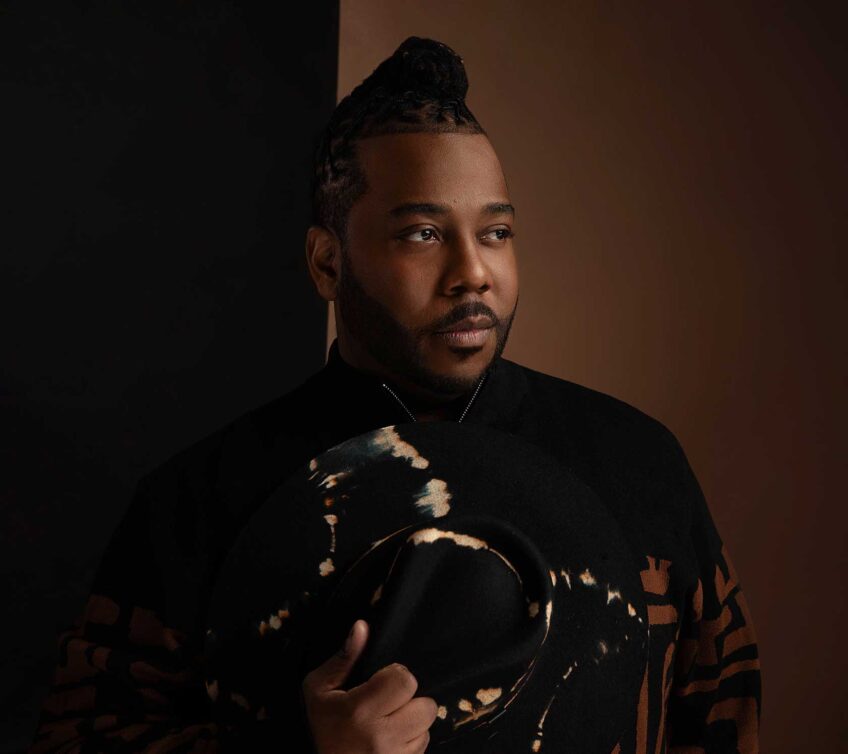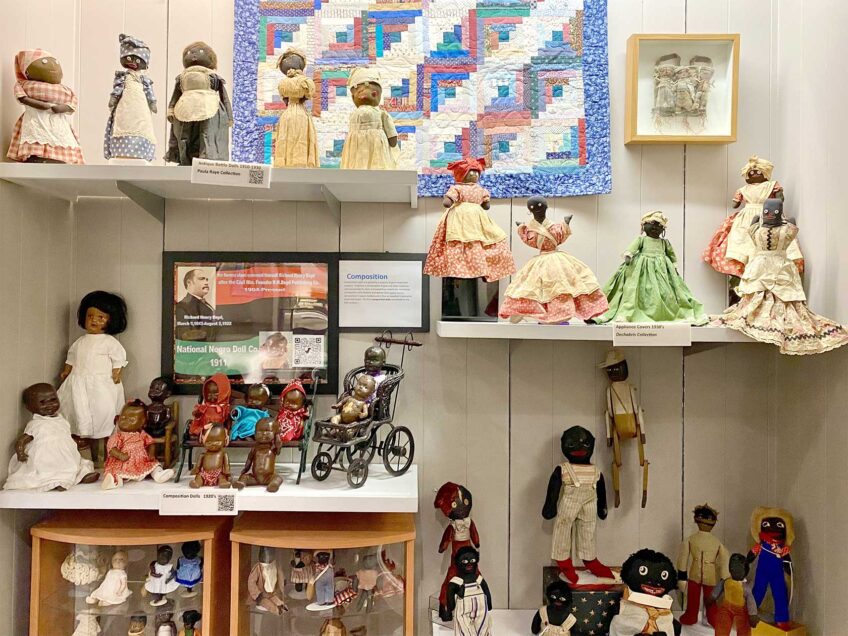
“I’m actually a baritone,” said renowned jazz vocalist Cassandra Wilson, laughing, to a small audience in an oak-paneled library on the campus of Harvard University last Wednesday. “My voice is like an iceberg. There’s a lot more under the surface.”
Drawing an audience that included students as well as long-time fans, the afternoon session, entitled “A Conversation with Cassandra Wilson,” was moderated by Ingrid Monson, Quincy Jones Professor of African American Music at Harvard. The event was part of Wilson’s stay on campus as 2017 Jazz Master in Residence. Hosted by the Office for the Arts at Harvard and Harvard Jazz Bands, Wilson visited classes, rehearsed with students and performed with the Jazz Bands Saturday night at Sanders Theatre in a public concert entitled “Women in Jazz: Celebrating Cassandra Wilson.”
Elegant and relaxed, Wilson wore a fur-trimmed hat, grey cardigan and shiny black pants. Seated in upholstered chairs, she and Monson faced each other and the audience. Wilson often shifted to the edge of her seat and leaned forward as she listened to a question, and then sat back to consider it, responding in her smoky voice — traditionally described as a contralto. With her warm give-and-take, Wilson’s conversation with Monson and the audience delivered much of the same pleasure as a musical performance.
Listening to yourself
Guiding a conversation that touched on all phases of Wilson’s career and development as an artist, Monson also played excerpts from some of the singer’s recordings, including a mesmerizing passage of Wilson’s ballad “Until.”
Speaking further about her voice, Wilson said, “I’ve never taken a vocal lesson. I learned that if you converse in a certain place, that’s where you should sing. It’s about listening to yourself, where you are, your timbre.”
Wilson, 61, might have added that for her, it’s also been about listening to where she’s been. Noting that her southern accent is more audible when she sings than when she talks, she said, “I come from Mississippi.”
Wilson’s parents were musicians and educators, and at age five she began taking classical piano lessons, and in high school learned to play the guitar.
Fertile home ground
Describing her childhood in Jackson, Mississippi, as “very sheltered,” Wilson recalled the first time she felt fear — the night that civil rights activist Medgar Evers was assassinated, when she was 7 years old. “He lived a half-mile from us,” Wilson said. “It was the first time I realized that it was not cool out there.”
Noting that she visits her hometown often, Wilson, a two-time Grammy recipient, counts among her many awards a marker on the Mississippi Blues Trail. The rich musical heritage of the Mississippi Delta and its neighboring Appalachian mountain region has been fertile ground for Wilson’s intertwined musical and personal journeys.
Pointing out that the roots of jazz extend well beyond its most heralded birthplace, New Orleans, itself a multicultural jambalaya, Wilson spoke of the dual diasporas of the poor white laborers from Ireland and the African slaves and their descendents. Both were “oppressed people,” and both were inventive in their mingling of old world and new cultural traditions. Irish step dancing in no small way influenced African American tap, and vice-versa.
Wilson’s repertoire includes a version of the early blues anthem “St. James Infirmary Blues,” an old Irish song immortalized by a 1928 recording of Louis Armstrong.
The words “path” and “connection” come up often as Wilson speaks of her music. She describes a braiding of past and present into the new and intertwining of various cultures that she shares with other leading jazz musicians of her generation as well as younger artists such as pianists and composers Jason Moran and Vijay Iyer.
Diverse influences
Wilson has earned acclaim in her multiple roles as a jazz musician, vocalist, songwriter and producer. In her distinctive repertoire — reinventions of songs by others as well as her own songs — she draws from various sources, including the blues, country and folk music traditions, pop and R&B.
Formative experiences included Wilson’s time in New York City during the early ’80s, when as a founding member of the M-Base Collective, she and saxophonist Steve Coleman collaborated with other jazz musicians to incorporate funk, soul and pop grooves into rich and complex original pieces.
In 2014, Wilson discovered that her roots include Irish and Welsh threads as well as West African ancestry, and she relishes exploring an ancient Irish vocal tradition that she finds equal in gravitas and emotional power to the blues — the a cappella Sean Nós tradition. She is planning to perform in Ireland and her gig at the Irish Arts Center in New York City earned her its 2015 Spirit of Ireland Award.
Wilson’s influences remain wide-ranging, and she spoke with equal ardor of Joni Mitchell and Abbey Lincoln, each a singer and songwriter true to her own muse.
Citing Lincoln’s song “People in Me,” Wilson said, “We’re all colored. I don’t use the expression ‘white people.’ I say beige, taupe, vanilla. We’re really all of that.”
Speaking of her musical journey, Wilson said, “It’s part of healing as an African American … to learn to love all of me.”


![Banner [Virtual] Art Gallery](https://baystatebanner.com/wp-content/uploads/2024/04/Cagen-Luse_Men-at-store-e1713991226112-150x150.jpg)

![Banner [Virtual] Art Gallery](https://baystatebanner.com/wp-content/uploads/2024/04/Cagen-Luse_Men-at-store-e1713991226112-848x569.jpg)

